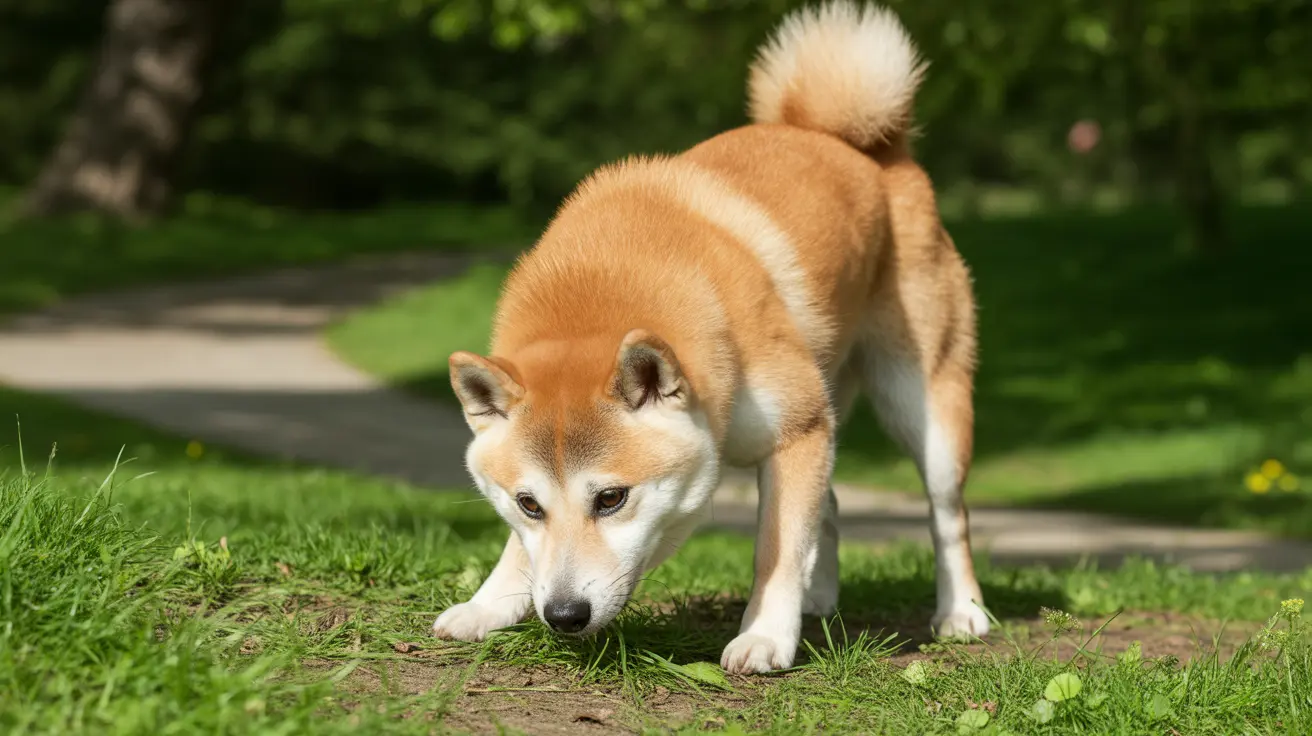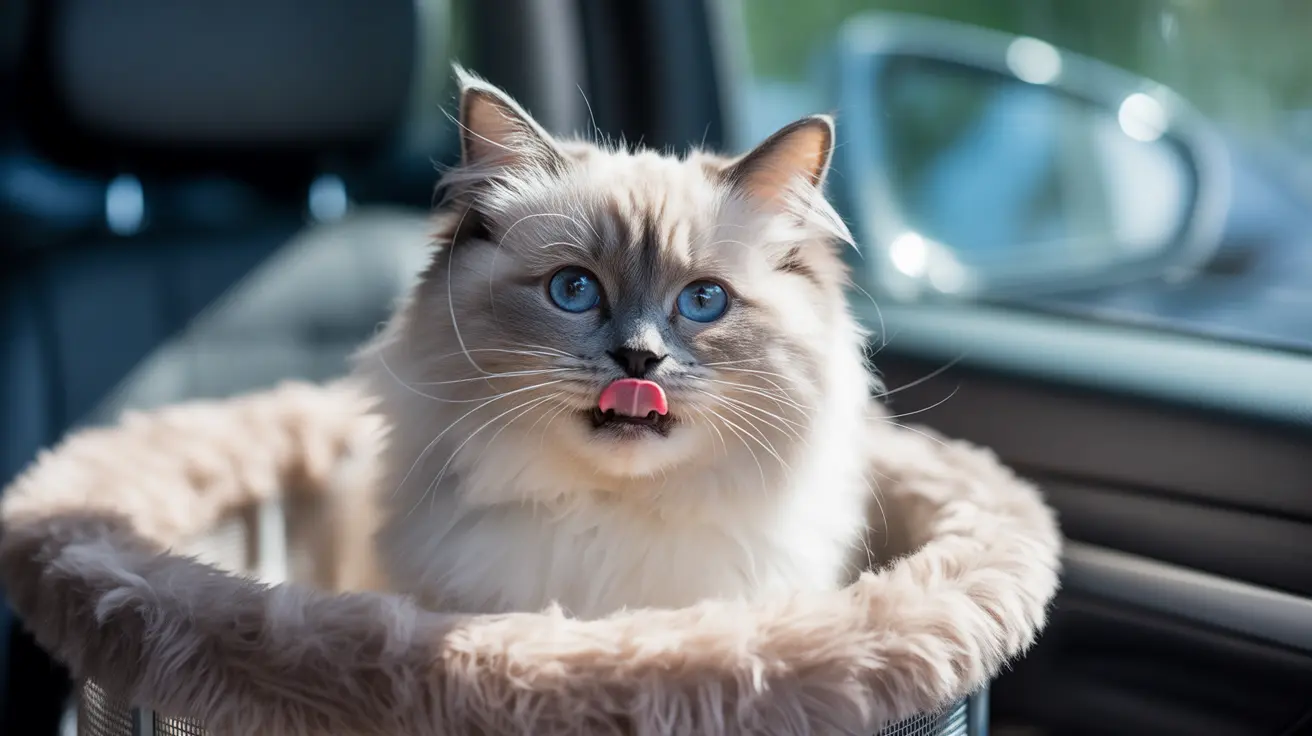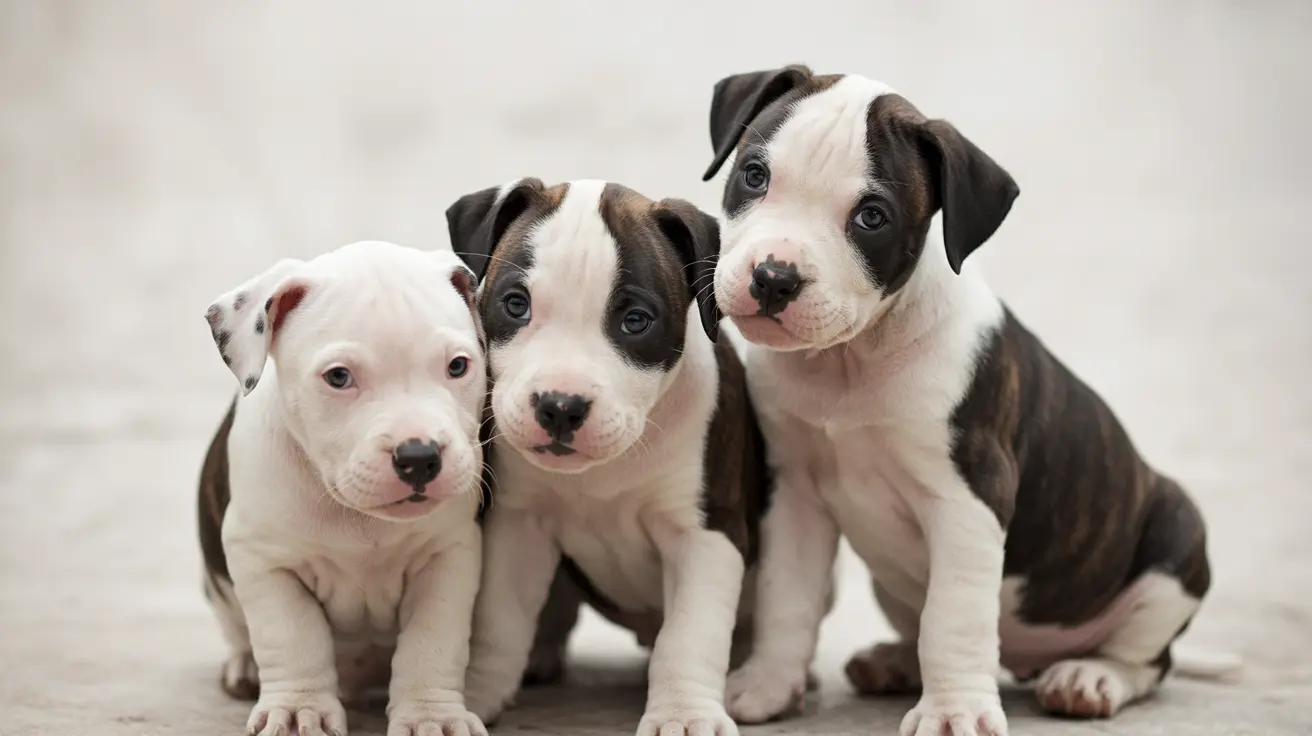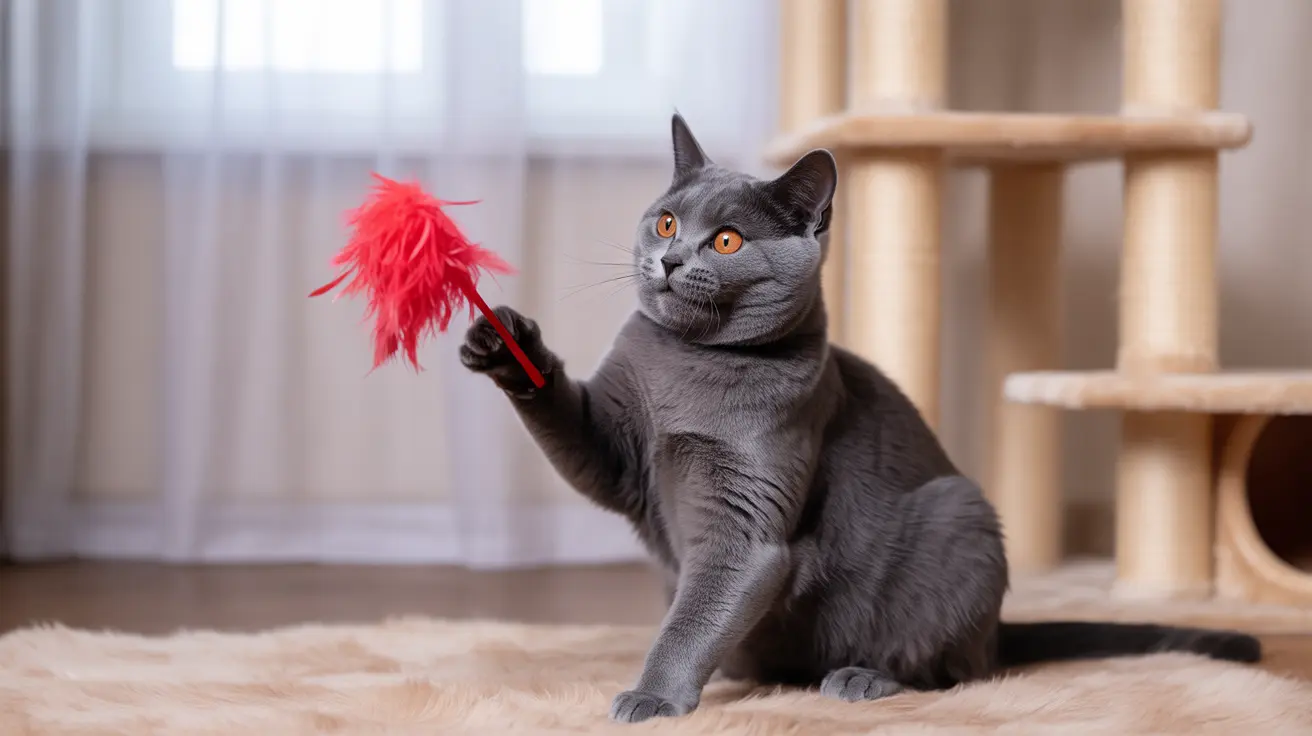Dog Sniffing Games and Scent Training: A Complete Guide to Enriching Your Pet's Natural Abilities
Every dog owner has witnessed their furry companion's incredible dedication to investigating every interesting scent during walks, from fire hydrants to fallen leaves. This natural behavior isn't just curiosity—it's your dog utilizing their most powerful sense. With a sense of smell that is between 10,000 and 100,000 times more acute than humans, dogs experience the world primarily through their noses. Understanding and harnessing this remarkable ability through dog sniffing games and scent training can transform your pet's mental well-being, strengthen your bond, and provide an outlet for their natural instincts.
Dog sniffing games and scent training represent more than simple entertainment; they tap into your dog's fundamental nature while offering structured mental stimulation. Whether you're dealing with a hyperactive puppy, a nervous rescue dog, or simply want to enrich your pet's daily routine, scent work provides a rewarding path forward. This comprehensive guide will explore how to effectively incorporate sniffing activities into your dog's life, from simple at-home games to more advanced scent training techniques that can benefit dogs of all breeds, ages, and temperaments.
Understanding Your Dog's Extraordinary Sense of Smell
To appreciate why dog sniffing games are so effective, it's essential to understand just how remarkable your pet's olfactory system truly is. Dogs possess an extraordinary sense of smell that serves as their primary method of gathering information about their environment, other animals, and even human emotions. This incredible ability makes scent-based activities not just enjoyable for dogs, but fundamentally satisfying on a biological level.
A dog's nose contains specialized receptors that can detect and distinguish between thousands of different scents simultaneously. While humans rely heavily on sight and hearing, dogs use their noses for greeting, socializing, and orientation in their world. This is why your dog spends so much time investigating scents during walks—they're essentially "reading the news" of their neighborhood through smell. When we provide structured sniffing opportunities, we're allowing dogs to engage with their most important sense in a meaningful way.
The act of sniffing also triggers the release of happiness hormones in dogs, creating a natural stress-relief mechanism. This biological response explains why sniffing activities can help calm anxious dogs during stressful situations such as car rides, meeting other dogs, or dealing with loud noises like fireworks. By incorporating regular scent work into your dog's routine, you're providing both mental enrichment and emotional regulation.
Getting Started with Simple Sniffing Games at Home
Beginning your journey into dog sniffing games requires no special equipment or extensive training—just enthusiasm and some high-value treats. The simplest and most effective starting point is the classic "Find the Treats" game, which can be played anywhere in your home. Start by having your dog watch as you hide a few small, aromatic treats in easy-to-find locations around a single room. Use a consistent cue word like "Find it!" to signal the start of the search.
As your dog begins to understand the game, gradually increase the difficulty by hiding treats in more challenging locations or using multiple rooms. The key is to ensure early success to build confidence before advancing to harder searches. Remember that sessions should typically last between 4 to 10 minutes to prevent mental fatigue and maintain engagement. Puppies and brachycephalic (short-nosed) breeds may require shorter sessions due to their physical limitations.
Another excellent beginner game is the "Shell Game," where you place a treat under one of three containers and let your dog sniff to determine which one contains the reward. This game helps dogs learn to use their noses rather than their eyes to solve problems. Start with containers that allow some scent to escape, and gradually progress to more challenging containers as your dog's skills develop.
Advanced Scent Work and Training Techniques
Once your dog has mastered basic sniffing games, you can progress to more structured scent work training. Canine nose work, also called scent detection, involves training dogs to locate specific scents, often essential oils such as birch, anise, clove, and cypress, hidden in various search areas like rooms, vehicles, or outdoor locations. This represents the foundation of competitive scent work sports offered by organizations such as the American Kennel Club (AKC) and the National Association of Canine Scent Work (NACSW).
Professional scent work training follows a 100% motivational and reward-based approach with no corrections used. Dogs can earn high-value rewards like tug toys, food, or play based on their individual preferences. The training process involves setting up search areas, introducing target odors, establishing search patterns, and teaching focused responses when the dog detects the target scent. Dogs communicate their finds through various behaviors such as pawing, barking, pointing, sitting, or lying down.
Training can be accomplished at home using cotton swabs saturated with essential oils, hidden out of sight in designated search areas. As dogs become more proficient, searches can expand to include vehicles, outdoor areas, and increasingly complex hiding spots. The handler must learn to read their dog's body language and follow their nose to success, creating a true partnership where the dog takes the lead role.
Tailoring Games to Your Dog's Needs and Abilities
Successful dog sniffing games require customization based on your individual pet's breed, age, temperament, and physical capabilities. High-energy breeds may benefit from more challenging outdoor scent trails, while older dogs might prefer shorter, indoor searches that don't require extensive physical movement. Nervous or reactive dogs often find scent work particularly beneficial as it promotes calmer, more confident behavior by allowing them to succeed using their natural abilities.
For dogs with behavioral issues or physical limitations, scent work remains highly accessible. Unlike many dog sports where the handler maintains control, scent work allows the dog to take the lead, building confidence in shy or anxious animals. The mental stimulation provided by sniffing games can also help reduce hyperactivity and provide an appropriate outlet for dogs who might otherwise engage in destructive behaviors.
Consider your dog's preferences when selecting rewards and game types. Some dogs are highly food-motivated and will work enthusiastically for treats, while others prefer play-based rewards like tug toys or fetch. Pay attention to signs of stress or frustration during activities, such as excessive panting, whining, or loss of interest, and adjust the difficulty level accordingly. The goal is always to maintain a positive, successful experience that builds your dog's confidence.
Creating DIY Sniffing Toys and Equipment
You don't need expensive equipment to provide enriching scent experiences for your dog. Many effective sniffing toys can be created using common household items. A simple sniff mat can be made by tying fleece strips through a rubber doormat, creating hiding places for treats that encourage natural foraging behavior. Empty cardboard boxes with treats hidden inside provide disposable puzzle toys that satisfy your dog's desire to investigate and tear apart interesting objects.
Toilet paper rolls stuffed with treats and pinched closed at the ends make excellent single-use puzzle toys. For outdoor activities, you can create scent trails using aromatic treats or even just your own scent on pieces of fabric. The key is to provide variety and ensure that the difficulty level matches your dog's current abilities to prevent frustration.
More advanced DIY projects might include creating multiple hiding spots throughout your yard or home using PVC pipes, wooden boxes, or other containers. These can be rotated and rearranged to keep games fresh and challenging. Remember that safety should always be the priority—ensure that any materials used are non-toxic and appropriately sized to prevent choking hazards.
Safety Considerations and Best Practices
While dog sniffing games are generally very safe activities, certain precautions should be observed to ensure positive experiences. Always supervise your dog during scent work sessions, particularly when using new equipment or exploring new areas. Watch for signs of overexertion, especially in brachycephalic breeds or during warm weather, as intensive sniffing can be physically demanding.
A dog's wet nose helps with cooling, so always ensure access to fresh water after sniffing games. Sessions should not be too long to avoid overheating, and games should be postponed during extremely hot weather. Indoor activities may be preferable during temperature extremes.
Maintain a calm atmosphere during sniffing games and be ready to assist if your dog struggles with a particular search. The goal is always success and positive reinforcement. If your dog becomes frustrated or stressed, simplify the game or take a break. Some dogs may need encouragement to get started, while others may become overly excited and need guidance to slow down and use their noses effectively rather than relying on sight.
Integrating Scent Work into Daily Training Routines
Dog sniffing games can be seamlessly integrated into your existing training routine to provide behavioral improvements beyond basic obedience. Many professional trainers recommend using scent work as a foundation for building focus and communication between dog and handler. The collaborative nature of scent work, where the handler must learn to read and trust their dog's abilities, strengthens the human-animal bond in unique ways.
Scent work can be particularly effective for managing common behavioral issues. Dogs who are hyperactive or have difficulty focusing often find the mental stimulation of nose work helps channel their energy productively. For dogs with separation anxiety, confidence-building scent games can help develop independence and self-assurance. Even reactive dogs can benefit, as the focused nature of scent work provides an alternative behavior to practice in challenging situations.
Regular scent work sessions can also serve as valuable training for real-world situations. Dogs who are comfortable using their noses and following scent trails are often easier to manage during veterinary visits, grooming appointments, or other potentially stressful situations. The skills developed through scent work—focus, communication, and confidence—translate into many aspects of daily life with your dog.
Frequently Asked Questions
How often should I play sniffing games with my dog?
Daily sniffing activities are ideal, but even 2-3 sessions per week can provide significant benefits. Keep individual sessions between 4-10 minutes for most dogs, with shorter sessions for puppies and brachycephalic breeds. The key is consistency rather than duration.
Can older dogs participate in scent work?
Absolutely! Scent work is excellent for senior dogs as it provides mental stimulation without requiring intense physical activity. Older dogs often excel at scent work because they approach it more methodically than younger, more energetic dogs. Adjust the difficulty and location of hides to accommodate any mobility limitations.
What should I do if my dog seems frustrated during scent games?
If your dog shows signs of frustration like whining, pacing, or giving up quickly, the game may be too difficult. Return to easier searches where your dog can succeed, and gradually increase difficulty over multiple sessions. Always end on a positive note with a successful find.
Are certain breeds better at scent work than others?
While some breeds like hounds and retrievers were bred for scent-related work, all dogs can enjoy and benefit from sniffing games. Each dog has individual preferences and abilities that matter more than breed characteristics. Even flat-faced breeds can participate with appropriate modifications to prevent overexertion.
How do I know if my dog is overheating during scent work?
Watch for excessive panting, drooling, lethargy, or loss of interest in the activity. Always provide fresh water and take breaks as needed. In hot weather, stick to indoor games or wait for cooler parts of the day. Dogs with flat faces are particularly susceptible to overheating.
Can I use my own scent instead of treats for hiding games?
Yes! Handler discrimination is actually a division in competitive scent work where dogs search for their handler's scent. You can start by having your dog find clothing items or other objects that carry your scent. This type of training can be particularly useful for building your dog's tracking abilities.
What's the difference between casual sniffing games and formal scent work training?
Casual sniffing games focus on enrichment and fun using treats and simple hiding games. Formal scent work training involves teaching dogs to detect specific target odors like essential oils and communicate their finds in consistent ways. Both are valuable, and many dogs enjoy progressing from casual games to more structured training.
Conclusion
Dog sniffing games and scent training offer one of the most natural and effective ways to enrich your pet's life while strengthening your relationship. By tapping into your dog's extraordinary olfactory abilities, you provide mental stimulation that can reduce anxiety, build confidence, and create positive outlets for natural behaviors. Whether you start with simple treat-hiding games in your living room or progress to formal scent work training, the key is to maintain a positive, reward-based approach that celebrates your dog's natural talents.
The beauty of scent work lies in its accessibility—every dog, regardless of breed, age, or temperament, can participate and benefit from these activities. As you embark on this journey with your canine companion, remember that patience, consistency, and positive reinforcement are your most valuable tools. With regular practice and appropriate challenges, you'll likely discover that your dog's confidence grows, your bond deepens, and both of you find joy in this celebration of one of nature's most remarkable sensory abilities.






